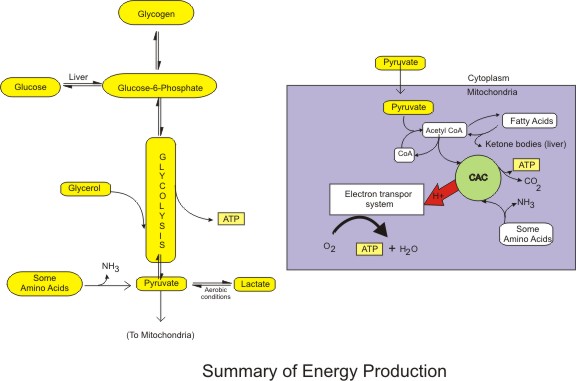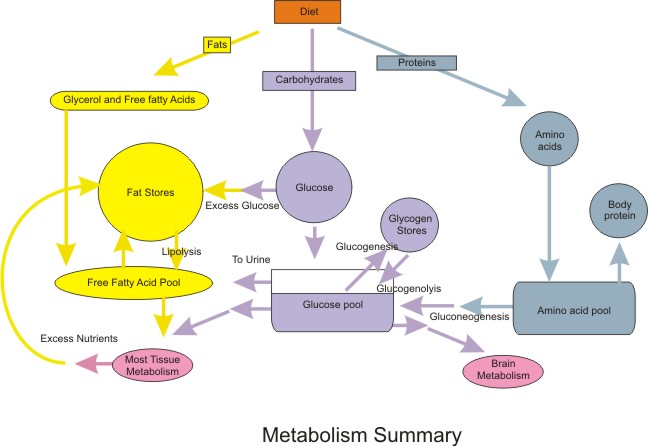Medical Physiology/Basic Biochemistry/Metabolic Integration
Summary of Energy Pathways[edit | edit source]
The following flow sheet is a summary of the energy producing pathways.

Most ATP is produced in the mitochondria via the Citric Acid Cycle, which can utilise both Pyruvate from Glycolosis and Acetyl CoA from fatty acid metabolism. Note that amino acids must be deaminated before entering into the energy production chain.
In a fasting state liver glycogen is the main source of glucose, as only the liver (and the kidney) has the enzymes to convert glucose-6-phosphate to glucose. If the supply of liver glycogen becomes exausted as can occur with prolonged exercise or starvation (the liver has about 6 hours supply of Glycogen) then fatty acids become the main source of energy for cells, however glucose levels must be maintained for brain function, and amino acid catabolism will be come the main source of glucose.
Cells, particularly muscle cells can store their own supply of glycogen, and they can utilise this, but because of a lack of glucose-6-phosphatase they cannot produce glucose for the main pool.
Summary of Protein Catabolism[edit | edit source]
Protein is an important source of glucose in the fasting state. Excess protein is also converted to Fat - via. the glucose pool - for storage. Individual acids are cleaved off the peptide chain, and then the amino acid is deaminated producing a fatty acid which enters either the glycolysis path way or the CAC.
Metabolism Summary[edit | edit source]
The following diagram is fairly self explanatory, and summarizes how the body nutrition metabolism all fits together.


